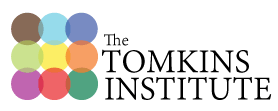Goals:
- Be able to understand how Tomkins defined the importance of the Affect System for biology, culture, and personality.
- Discuss some clinical examples of how the recognition of the affects and their triggers helps in psychotherapy.
Readings:
EA, “The Rise, Fall, and Resurrection of the Study of Personality.” pp. 303-311.
Nathanson S&P, “The Affect System,” Chapter 2, pp. 47-65.
Bulletin, v4, #3-4, 1996, Donald L. Nathanson, “The Philadelphia System,” pp. 21-26.
Bulletin, v1, #2, 1994, Donald L. Nathanson, “The Case Against Depression,” pp. 1-3.
Bulletin, v1, #1, 1994, Donald L. Nathanson, “Old Concept/New Concept,” pp. 4-5.
Discussion Questions:
- How are biology, social factors, and affect interrelated in the study of personality?
- Give several examples of how affective shifts in personality are influenced by social factors.
- Explain the concepts of hardware, firmware, and software.
- How does the therapeutic use of analogues aid in generating health?
- What are the four points of Kelly’s theory of intimacy?
- How does Nathanson define depressive behavior using Tomkins’s ideas as a frame?
- Explain the differences between drives and affects.
- How does observing affect help therapists treat “impulsivity”?
